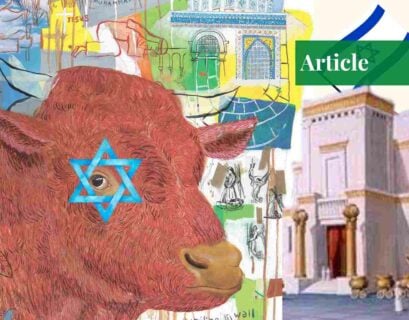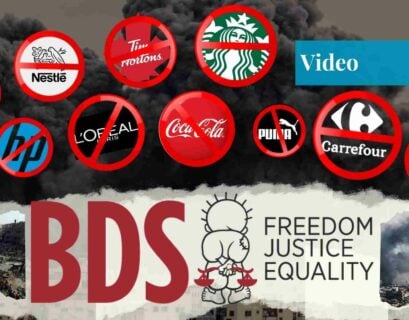Asra Zahid is pursuing her bachelor's in peace and conflict studies at National Defence University. Her areas of interest include ethnic conflicts, ideological conflicts, international politics, and current affairs.
Introduction
The conflict transformation model advanced by John Paul Lederach will be applied to the Israel-Palestine conflict. Lederach views conflict transformation as an approach to creating constructive change processes through conflict. These processes provide an opportunity to learn about patterns and address relationship structures while providing concrete solutions to presenting issues.
The conflict transformation model proposes three inquiries to understand specific aspects of the conflict:
- Presenting Situation: It depicts a history of conflict over time, changing patterns, and underlying issues.
- Change Process: Change processes provide four central modes i.e personal, cultural, relational, and structural in which conflict impacts the situation. Each of the modes of change processes is further analyzed in descriptive (what does conflict change) and prescriptive (what kind of change is sought).
- Horizon of the Future: It answers the questions of how people will relate to each other and how the dynamics of the system are going to be different from what was going on in presenting situation.
Inquiry 1: Presenting Situation
History
The Israel-Palestine political conflict goes back to Holocaust in the 19th century when stateless Jews exhausted after facing anti-Semitism came as migrants to Palestine. At that time, Palestine was a colony of the British. Soon after immigration, Jews started the Zionist movement for the separate promised Jewish homeland. The movement soon gained popularity and the Balfour Declaration led to the creation of Israel.
The British government and the League of Nations supported a separate Jewish state. In November 1947, the United Nations General Assembly passed Resolution 181, partitioning the land into “Independent Arab and Jewish States.” The resolution met immediate Arab rejection. Palestinian militias attacked Jewish settlements. On May 14, 1948, the Zionist leadership declared the founding of the state of Israel. The new Jewish state was immediately invaded by the armies of several Arab countries, alongside Palestinian militants.
By the time the fighting ended the next year, the Palestinians had lost almost four-fifths of their United Nations allotment. In the Six-Day War of June 1967, Israel repelled a true existential threat, routing a heavy Arab military force massed at its borders. Israel’s seizure of East Jerusalem, the West Bank, and Gaza during the war left Palestinians under various forms of painful Israeli occupation or control.
Jewish Israelis experienced two violent Palestinian Intifadas (1987-1993 and 2001-2005), the second of which saw a wave of deadly suicide bombings and ambushes. Since the 1990s, there have been several failed attempts to negotiate a two-state solution. Under Israel’s longest-serving prime minister, Benjamin Netanyahu, Jewish settlement in the West Bank and East Jerusalem accelerated.
Issues
Sovereignty over the Land
In terms of two parties claiming the right to national self-determination on the same territory by 1949, Israelis had successfully established their national state. What remains in contention today is whether the Palestinians will achieve sovereignty over designated parts (or all) of the territories they claim as their rightful homeland.
Demography, Land Purchase & Migration
A substantial number of Palestinians were displaced. Forced into exile, they claimed the right to return to, or be compensated for, the homes they had been forced to abandon during the fighting.
Borders & Water Dispute
The “unfinished business” of borders after the 1948 war became one of the factors contributing to the outbreaks of subsequent cross-border skirmishes and raids, culminating also in major wars in October 1956, June 1967, and October 1973. Israel controls and restricts Palestinian access to water to a level that neither meets their needs nor constitutes a fair distribution of shared water resources.
Gaza Blockade & the Holy City of Jerusalem
Due to the block in Gaza, the unemployment rate is 40%, and the amount of industrial fuel provided to Gaza is reduced by 5%. Due to biblical prophecy and Jerusalem as the capital of the Kingdom in the era of King David, Jerusalem is of great importance to Jews. For Muslims, there is Qibla e Awal In Jerusalem. Hence, conflict in this holy place between two religious communities has led to violent conflict many times.
Patterns of Conflict
The conflict has also been visualized by some historians and political scientists as a cyclical or spiral pattern: grievances fester, tensions build up, and a spark ignites a war. Fighting ends, but only temporarily and without resolving all the war’s original causes. Rekindled new grievances then build new instability and provide the conditions that will eventually spark the next outbreak of hostilities.
The widening of the spiral represents the escalation of violence and inclusion of new elements, actors, or levels of complication previously absent from the conflict in its earlier forms. The changing patterns of the conflict over time can also be portrayed geographically, by presenting and discussing a series of changing maps.
- 1882-1948 – a conflict between two national communities to control a single land,
- 1948-the 1990s – a conflict between Israel and neighboring Arab states, at first eclipsing the Palestinians but gradually witnessing their reassertion as central protagonists,
- The 1990s-2000s – a largely Israel-Palestine confrontation unsuccessfully looking for a formula to share the land between two states, with Arab states less engaged, and
- 2001-present – a festering, unresolved local conflict with regional and international dimensions, driven increasingly by religious fundamentalists
Inquiry 2: Change Processes
Personal Change
Descriptive
The presence of direct threat, substantial risk, and steady danger have animated the advancement of individual and aggregate apprehension. The consistent sensations of dread and danger to individual and aggregate security in Israel and Palestine have been one of the primary variables in the advancement of the “security mindset”. Bias and generalizations are profoundly imbued in people’s mental frameworks and are not prone to change without coordinated exertion.
Prescriptive
The cost of keeping up with the state of affairs is so horrendously high that individuals ought to be willing to a carefully thought out plan of action from here on out. The blend of sharing a dream of a superior future and supporting the desperate results of the norm parcel throughout everyday life. This approach enjoys the benefit of breaking the mentality.
Relational Change
Descriptive
Since its creation in 1948, Israel is viewed as a colonial settler state, and its rationale force (Zionism) is a forceful colonialist development, a reasonable design to populate with outsiders what they treated as vacant territory, claiming the land and ousting the native populace. The Palestinian residents of Israel comprise a public minority that challenges the state’s pronounced Jewish and popularity-based character.
Prescriptive
A portion of the present Israelis or Palestinians might bring out recollections of hundreds of years of conscious resilience and productive Muslim-Jewish cooperation since the seventh century CE as an example to be recalled and imitated, if conceivable, in defeating later aggression.
It is vital to extend a dream of living respectively to trust and to inspire. In creating a joint vision, the central thought is to unite Israelis and Palestinians to share an unmistakable, point-by-point vision of a typical future. Such an emphasis on a common and further developed future will be fundamental in defeating the shortfall of trust.
Cultural Change
Descriptive
Toward the beginning of the 20th century, Arab nationalists felt qualified for self-determination in light of their long-lasting residence in the region. However, this supposition was tested by Jews in Europe. Jews viewed the Middle Easterners not as their equivalents but rather as an immature group.
Prescriptive
A few medications can be thought of as counter-cultural contentions: interfaith discourse; the recognition of past productive cooperation among Jews and Muslims; and the focus on religious texts asserting positive and tolerant religious values, reinforcing these values in educational systems on both sides.
Structural Change
Descriptive
According to the viewpoint of Jewish history and arising Zionism, Jews who moved to Palestine viewed themselves as getting back their antiquated country. According to the viewpoint of the Muslim occupants of the land, these Zionist workers were seen as unfamiliar gatecrashers.
Prescriptive
Taking part in serious political maintenance is important. It is likewise vital to bring colonists into the interaction, to persuade them regarding the significance of a two-state arrangement, and to deal with merging new interest-based alliances. This approach predicts an alliance of conservatives committed to a two-state solution, with Israelis and Palestinians cooperating with a backdoor mechanism.
Inquiry 3: Horizons of the Future
Solutions
Borders Conforming International Legitimacy
The boundaries between the two states ought to be drawn in a way that confirms international legitimacy (as communicated in significant UN goals) and lays out a Palestinian state (comprising of the West Bank and Gaza) that meets the standards of freedom, feasibility, manageability, and contiguity inside the West Bank. To this end, the boundaries would follow the 1967 truce lines.
Joint Sovereignty over Holy Sites
In acknowledgment of the significance of Jerusalem to both groups, the city would be shared by the two states. The city’s Jewish areas would be under Israeli power, while its Arab areas would be under Palestinian administration.
Removal of Israeli Settlements from the West Bank
To guarantee the autonomy, feasibility, manageability, and contiguity of the Palestinian state, Israeli settlements with extraterritorial privileges and status would be eliminated from the West Bank.
Acknowledgment of the Right to Return
Israel would perceive that the refugee issue and the right to return are fundamental to the Palestinian national identity and recognize its portion of liability regarding the situation of the refugees. Refugees would be conceded citizenship and the option to come back to the Palestinian state.
Visionary Approach to Leadership
The leaders should take on a visionary methodology, rising above the overall influence and the math of bartering concessions. One method for settling the political shortcoming in Israel and Palestine isn’t just for Israel to sustain its political framework or for Palestinians to brace theirs, yet for them to cooperate to detach the fanatics on the two sides.
One Country, Two States
A striking assertion of a positive vision of a typical future could require a unified country with separated sovereignty. This idea separates state and nation, permitting the two (Israelis and Palestinians) to keep their connection to the land while guaranteeing “ownership”.
To loan reality to this idea, the vision requires a scope of helpful exercises that treat the common land as a unit, intended to help each state and its populace as well as the country in general. It would likewise require free development across state borders so residents of the Palestinian state could visit Jaffa, and Israeli Jews could come to revere at Abraham’s burial place in Hebron.
If you want to submit your articles and/or research papers, please check the Submissions page.
The views and opinions expressed in this article/paper are the author’s own and do not necessarily reflect the editorial position of Paradigm Shift.



















